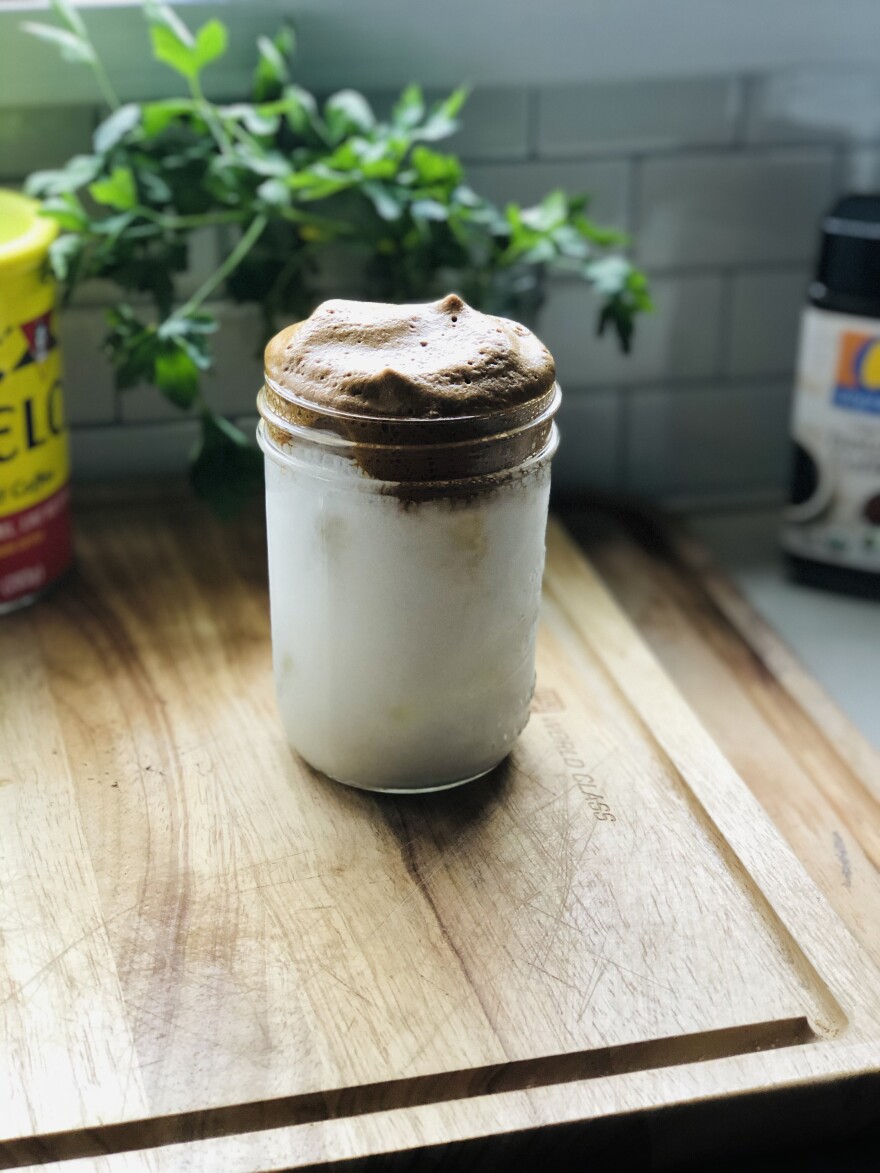Since mid-March, Unalaskans have been hunkering down and socially isolating due to the COVID-19 pandemic. People have been avoiding crowds and public spaces such as bars, restaurants, and supermarkets—and spending more time in their own kitchens.
Over the past couple months, I have been putting together an Unalaska quarantine kitchen cookbook—sitting down with a few locals to hear about what kind of experiments, recipes, and memories they've been cooking up during the COVID-19 pandemic.
Last week, in part four of our four-part series, I spoke with former Unalaska High School teacher Shawna Rudio about her trusty Instant Pot and transitioning to home-based education in the wake of the pandemic. And in this bonus episode, I take a look back at some of the quarantine trends and recipes I've tried out while isolating over the past few months.
Around the beginning of April, I started documenting some of my quarantined kitchen experiments and adventures. At that time, Unalaska had been hunkering down for nearly three weeks in order to prevent the spread of the coronavirus, and I—like many people at the time—was in search of something to spice up my life, to make a mark in the never-ending loop of time my days had become, and frankly, it was hard to resist the social media trends, especially when they looked so elegant and sounded so simple.
One of the most popular, seemingly simplest, and most "instagrammable" was the whipped or dalgona coffee trend. It consists of three simple ingredients: instant coffee, sugar, and warm water—and of course the final, not-so-secret ingredient: some kind of social media platform to post your final product to—this seems to be the most important part of the quarantine cooking virtual trends.
After several failed attempts using the wrong type of coffee—be sure to use instant-coffee for this recipe and not just ground espresso—and about 90 minutes of mostly unproductive whipping—I had a beautiful heaping cup of velvety whipped coffee, draped over creamy coconut milk on ice, and, of course, the quintessential Instagram photo to go with it. My friends and family showered me with the quick-response, heart-eyed emoji reactions I was looking for, and hoping would fulfill my unmet needs for real social interaction.
With the 'thumbs-up' and virtual approval pouring in, it was time to move on to the next trend: bread-making.
At that point—it was late April then—I was still social distancing, but like many Unalaskans, who are considered "essential workers," I was still working and didn't have an obscene amount of extra time. But I still wanted to join my fellow social media survivalist bakers.
So, while sourdough bread-making seemed to be the trendiest at the time, I opted for a simpler bread recipe—one that came from the New York Times and included a tutorial video. It was a less strenuous, but equally pseudo-artisanal approach: a no-knead, long-proof loaf.
Well-versed in reading recipes and double-checking that I had the proper tools and ingredients—hoping to avoid a similar debacle as my not-so-instant coffee—my bread came out without a hitch. About 24 hours from start to finish—most of that time was simply waiting—it emerged from my tiny oven crispy, flakey, and even a little tangy.
By this time, I felt that I had sufficiently experienced the quarantine social media cooking trend. But my adventures in the quarantine kitchen weren't over.

I had been compiling recordings and creating episodes about Unalaskans in their kitchens while they were socially distancing, and had just finished writing about former Unalaska high school teacher Shawna Rudio's famous butter chicken.
Shortly after the episode aired, junior high math teacher Emma Carr—who lives in Rudio’s old house—excitedly messaged me, "Loved the Shawna QK episode! I have inherited the very instapot of which she spoke! Can I have that butter chicken recipe?"
Rather than just handing the precious recipe over, I suggested we make the butter chicken together, as we operate in the same COVID-19 isolation bubble.
"We are being extremely authentic with Shawna Rudio's house and instapot—so it's going to be the real deal," said Carr.
Clouded by sheer excitement and in awe of the much-coveted Rudio instant pot, Carr and I—both being somewhat novice instapotters—botched a few parts of the recipe. Namely, we forgot the butter.
But in our defense, technical issues with the famous Rudio instant pot did play a major part in our butter-less butter chicken.
Despite our "instaproblem" with getting the pot to seal properly, we baked the chicken in the oven, and it turned out great. Ultimately, all parties were pleased.
And while this experiment wasn’t exactly "instagrammable," it was a nice reminder of the way cooking, even when it goes horribly wrong, can bring people together, through space, time, and faulty instant pots.






